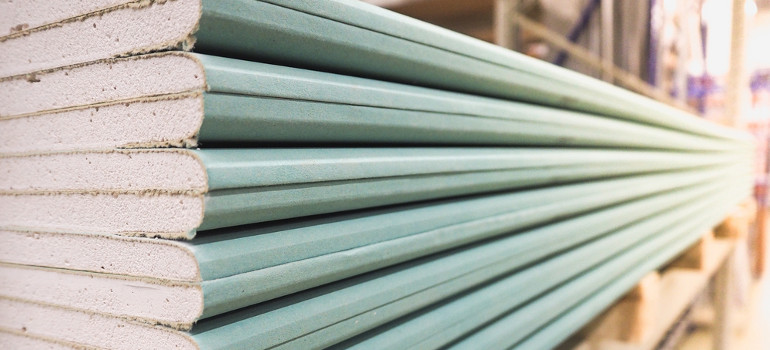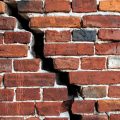
There is a lot of value in insulation. The biggest benefit of insulating your home comes from reducing the amount of money you’ll have to spend on heating or cooling any given year. There is a lot of information out there on how air conditioning affects change and how much it costs to heat an uninsulated home. The bottom line is clean – insulation is not only great for saving money, but you can help the planet, too.
The benefits of having your home insulated
Insulation is beneficial because it provides both heating and cooling passively. In other words, only small amounts of energy need to be used to maintain the desired temperature in your home. Insulation is an essential feature of Passive Homes, which are hyper energy-efficient; passive house buildings consume 80 to 90% less energy than typical homes and buildings. To understand insulation, you need to know a bit about how heat moves. Temperatures are always trying to balance out – heat will move towards colder areas until there’s a uniform temperature between all areas.
This means that in the wintertime, the heat from your home will try to move outside your home, while in the summertime, the heat from outside will try to move into your home. Insulation acts as a barrier to this movement, keeping your home warmer in the winter and colder in the summer. Heat is transferred by conduction, convection, or radiation, and the various forms of insulation target one or more of these transfer mechanisms.
Types of insulation and what is best for you
To know what types of insulation are best for your home, you’ll first need to determine what type of heat transfer you’re targeting. The regions of Australia all have vastly varied climates, so different insulation strategies should be employed.
The Australian Building Codes Board (ABCB) has created a Climate Zone Map to make it easier for Australian contractors to know how much insulation is mandated in the particular zone they’re working in. Don’t worry, you won’t need to memorise the exact insulation specifications of each region. The guide is handy and gives you a good idea of the differences regarding insulation requirements between regions.
We can almost start talking about the types of insulation you can use, where in your home to install it, and what you should lean towards. But before we get into all that, it’s important to understand a couple of terms.
- R-value. The first is the R-value. R-values determine how resistant a certain form of insulation, be it a layer of fibreglass or a window, is to conductive heat flow (the type that occurs when particles of different temperatures touch). The higher the R-value is, the more resistant the insulation is.
- U-factor. The U-factor is more general and tells you the rate of heat transfer through a particular item. The lower the U-factor, the better the insulation is.
It’s important to note that almost everything that your home is built of is also considered insulation. Your walls, your windows, your doors – they all impede the flow of heat and cold, so they all provide some measure of insulation to your home. By upgrading your windows and doors, you can create a very well-insulated home, which is ideal.
However, you will find specific information on insulating walls, ceilings, and floors.
Insulating your walls
The methods you can use to insulate your walls vary depending on what type of walls you have. Generally, the best type of insulation is known as bulk insulation. Bulk insulation contains millions of tiny pockets filled with air – gases are poor conductors of heat, so the more pockets of air you have, the better the insulation. It’s called bulk insulation because it’s bulky, and it may come in spray, board, or batts/blanket form. Board and blanket insulation are great for walls you have easy access to, like the walls in your attic, and you can often install this type of insulation yourself.
Other walls, like double brick walls, can’t be insulated with conventional methods because it’s impossible to access the wall’s interior without special tools. For these walls, spray insulation is preferred. Small holes are made in the walls; the insulation is then sprayed into those holes until the wall’s interior is filled with it. The holes are then closed up with mortar.
You need to keep in mind that this method tends to cost a bit more because you need to hire a professional to install the insulation for you. On the plus side, though, you can be advised by that specialist what type of insulation will suit your property best, and you can be sure that the installation will be successful.
Those living in the hottest regions of Australia should generally avoid bulk insulation and instead opt for reflective insulation (sometimes called radiant barriers). This type of insulation is particularly good at reflecting the sun’s rays, preventing them from overheating your home. Since it doesn’t trap the heat inside, your home can cool off easier on those hot days.
Ceiling and flooring insulation
In most places in Australia, you’ll want to insulate elevated floors; they can be insulated by a combination of bulk insulation and reflective insulation. However, you do not need to insulate the ground floor.
The same concept applies to ceilings – you’ll want to use a combination of the two types of insulation to get the best effects. This is somewhat different in the hottest regions of Australia, where reflective insulation alone is often preferable. In the coldest region of Australia (the alpine zone), you’ll want to be careful and insulate everything with bulk insulation; reflective insulation is rarely necessary for this zone. You can insulate most floors and ceilings yourself using batt/blanket insulation.
A quick word of caution before you take on such a project: installing insulation can be dangerous work. You shouldn’t do it yourself unless you’re sure you know what you’re doing. Anything from a fall to an uninsulated live wire can be hazardous, and improper insulation installation can increase the risk of a house fire.
Create the home of your dreams with ease!
Leave the kitchen renovation to the professionals!
You can book our handyman services in Melbourne, Sydney, Brisbane and Perth!


